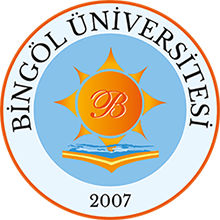İzuddin Abdurrazık B. Rizkullah er-Ras'ani'nin 'Rumüzü'l-Kunüz Fi Tefsiri'l-Aziz' Adlı Tefsirinde Kıraat Vecihleri
Özet
ÖZET:
“er-Rasʿânî’nin Rumûzu’l-Kunûz fî Tefsîri’l-Kitâbi’l-ʿAzîz Adlı Eserinde Kıraat Olgusu” başlıklı bu yüksek lisans çalışması, bir giriş, iki ana bölüm ve bir sonuçtan oluşmaktadır. Birinci bölümde Rizkullah er-Rasʿânî'nin hayatı ve ilmî kişiliği üzerine hazırlanan bu çalışma, onun yaşadığı dönemin siyasi, sosyal, ilmî ve kültürel yapısını incelemektedir. er-Rasʿânî’nin doğup büyüdüğü coğrafyanın İslam dünyasındaki gelişmelere etkisi, onun ilmî kişiliğini şekillendiren çevresel faktörlerle birlikte ele alınmaktadır. Eğitim sürecinde aldığı dersler, hocaları, öğrencileri, telif ettiği eserleri ve özellikle “Rumûzû’l-Kunûz fî Tefsîri’l-Kitâbi’l-Azîz” adlı tefsiri, “kıraat, lügat, irab, ahkâm ve kıssa” gibi farklı açılardan tanıtılmaktadır. Son olarak er-Rasʿânî’nin kıraat ilmindeki konumu ortaya koyduğu eserlerle belirlenmeye çalışılmıştır.
Çalışmanın ikinci bölümünde ise, er-Rasʿânî’nin tefsirinde kıraat ilmine verdiği önem sistematik olarak incelenmektedir. Kıraat farklılıklarına yaklaşımı sahabe ve tâbiîn rivayetlerinden yararlanması, kıraatleri senetli veya senetsiz şekilde sunması, kıraat imamlarını zikretme tarzı ve bu rivayetleri yorumlayarak açıklama yöntemleri etraflıca işlenmektedir. Mütevatir ve şâz kıraatlere yaklaşımı, tercih yöntemleri, kıraatlerin fıkhî, nahvî ve sarfî sonuçlarına dair analizleri de bu bağlamda yer almaktadır. Çalışma, hadisçi bir alim olan er-Rasʿânî'nin aynı zamanda kıraat ilmindeki yetkinliğini ve kıraat ilmini tefsir geleneğiyle nasıl bütünleştirdiğini ortaya koyan önemli bir akademik katkı sunmaktadır. ABSTRACT:
This master's thesis, titled “The Phenomenon of Qirāʾāt in er-Rasʿanî’s Work Rumūzu’l-Kunūz fī Tafsīri’l-Kitābi’l-ʿAzīz”, consists of an introduction, two main chapters, and a conclusion. The first chapter presents the life and scholarly personality of Rizkullah er-Rasʿanî, examining the political, social, intellectual, and cultural structure of the period in which he lived. The study explores how the geographical region where er-Rasʿanî was born and raised influenced developments in the Islamic world and how various environmental factors shaped his scholarly identity. It provides an overview of his educational background, teachers, students, and authored works—particularly his tafsīr titled Rumūzu’l-Kunūz fī Tafsīri’l-Kitābi’l-ʿAzīz—highlighting aspects such as qirāʾāt (variant readings), linguistics, iʿrāb (grammatical analysis), legal rulings, and narratives. Finally, the study seeks to determine er-Rasʿanî’s position in the field of qirāʾāt based on his works.
In the second chapter, the importance given by er-Rasʿanî to the science of qirāʾāt in his tafsīr is examined systematically. His approach to the differences among qirāʾāt, his use of reports from the Companions and the Tābiʿūn, his presentation of the qirāʾāt with or without chains of transmission, the way he mentions the qirāʾāt imams, and his methods of interpreting and explaining these narrations are all discussed in detail. His perspective on both mutawātir and shādh qirāʾāt, his methods of preference among readings, and his analysis of the jurisprudential, grammatical, and morphological implications of these qirāʾāt are also included in this context. The study provides a significant academic contribution by revealing how er-Rasʿanî, a scholar known primarily for his work in ḥadīth, was also proficient in the science of qirāʾāt and how he integrated this discipline into the tafsīr tradition.
Koleksiyonlar
- Kıraat İlmi [7]

DSpace@BİNGÖL by Bingöl University Institutional Repository is licensed under a Creative Commons Attribution-NonCommercial-NoDerivs 4.0 Unported License..













